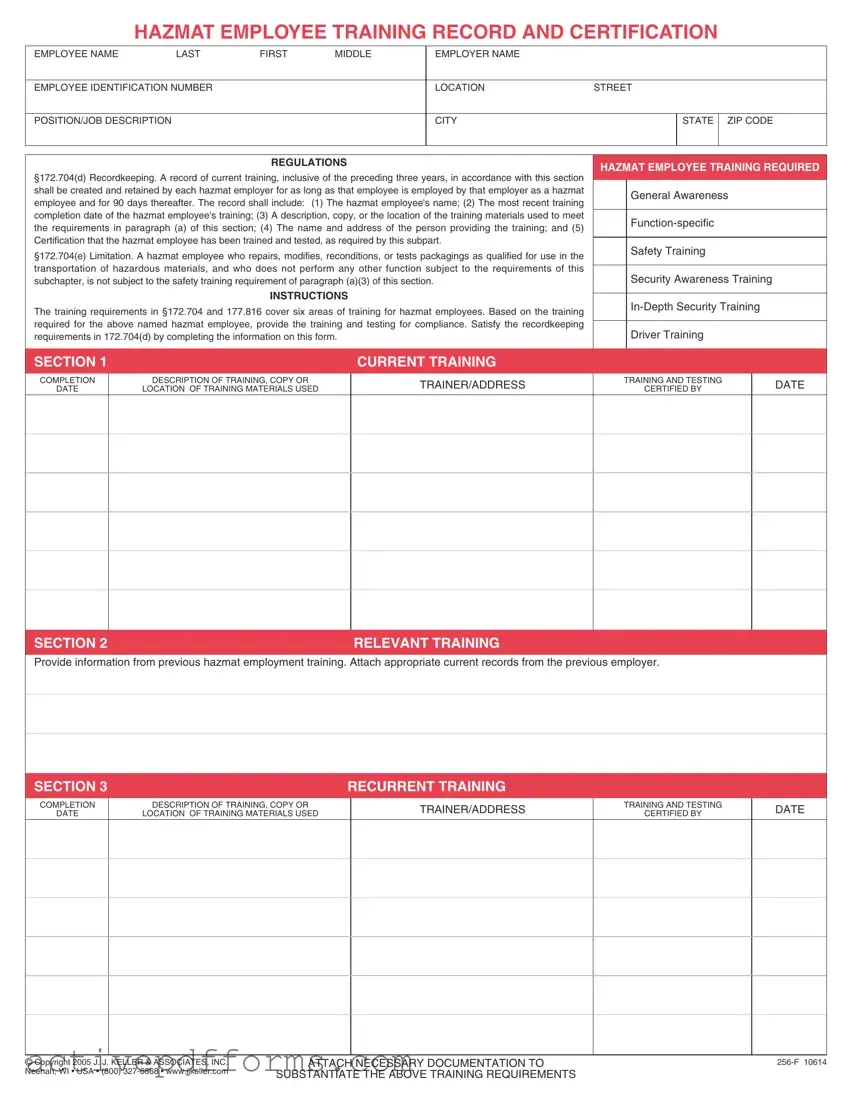Free Hazmat Employee Training Record PDF Template
The Hazmat Employee Training Record form serves as a critical document for tracking the training and certification of employees handling hazardous materials. It is designed to ensure that employees receive the necessary training in handling hazardous substances safely, covering a variety of topics including general awareness, safety, and security. Employers are required to maintain and update these records, thereby adhering to federal regulations that safeguard both the workplace and the environment.
Edit Hazmat Employee Training Record Now

